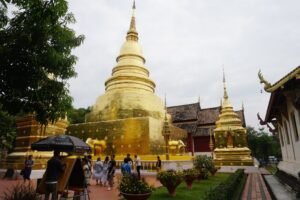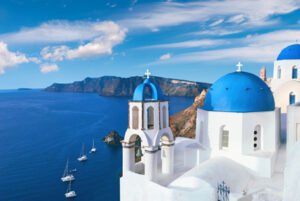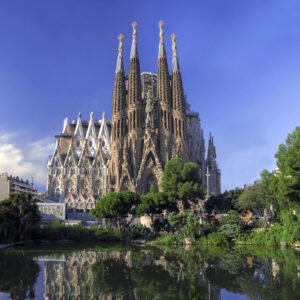Cultural, Social, Demographics Aspects of Berlin | Architecture of Berlin
Berlin has in times past shot artists, architects, journalists, and actors to limelight and fame, from Walter Gropius’s conception of Bauhaus to Fritz Lang, who filmed Metropolis and Spender, and Nabokov, Kafka, and Auden who were inspired in its cafes alongside many other great personalities birthed in the city.
Culture takes a predominant place in the city and was amplified as the first act in Berlin after the war. For example, theaters were permitted to air only eight days after the end of the Second World War, after that a concert was organized and a day later about 30 cinemas reopened. The people are predominantly art lovers, with an exorbitant nightlife that gives the city its energetic and lavish façade.
Emblematic of Berlin, the many landmark structures show a cultural glimpse of the Berlin people. Some of the iconic structures situated in the city are the Brandenburg Gate, famous boulevard Unter den Linden where one can after little detours catch a glimpse of the State Opera House, admire Hedwig’s Cathedral, or learn from the Old Museum with its diverse collections, a powerful iteration of tradition with the Schiller statue, not to speak less of the ancient temple-like façade of Pergamon Museum and a visit of the city rich in culture, would leave tourists dazed.
Berlin continues to evolve as a unified world metropolis with more foreigners than locals that is half a million making Berlin home, a city bustling with creativity, ideas, activities, and people, the culture has an adverse range to appreciate its uniqueness.
Political Dynamics
The city has been traumatized through the Second World War that lasted from 1939 to 1945 destroying many ancient structures and landmarks. Most notable about Berlin’s history is the wall that separated West Berlin from East Berlin, a wall that led to the disparate quality of life, ideologies, and architecture in both regions; it was brought down in 1989. Even in the political space, architecture can be seen as the seat of government through an impressive tower which can be sighted at close or far range, a tourist attraction to visitors is the Berlin City Hall also known as the Rotes Rathaus.
Modernization Effect on the Architecture of Berlin.
Berlin remains relevant to different eras of the architectural period. The architecture of the city spans from classical periods with the Gendarmenmarkt, which provides delicious delicacies and live entertainment, French and German Cathedral to Renaissance to Bauhaus days conceived by Walter Gropius to Modern days championed by Alta, and the contemporary style as it were in the 21st century. The industrial period with its new technologies reinvented Berlin with a range of novelties in transport, electricity, architecture, art, and lifestyle.
The tallest building in Berlin is the Berliner Fernsehturm, located at Alexanderplatz, a prominent landmark and structure with a height of 368m, consisting of a steel sphere with a visitor’s platform and a revolving restaurant. A reconstruction of the Berlin Wall in Bernauer Strasse and Acker Strasse has begun incorporating segments of the original wall but is predominantly made of perforated steel through which visitors may peer through to the other side. Sites commemorating Berlin’s dark era include the Memorial to the Murdered Jews, which occupies a vast area in central Berlin. The memorial is set south of the Brandenburger Gate and was erected for the 60th anniversary of the end of the Second World War. The other highrises in Berlin consist of free-standing structures, mast radiators, chimneys of power plants, church towers, residential buildings, and monuments like the Berlin Victory Column above 65m and upwards. There are almost no skyscrapers in Berlin simply because German law wants to preserve the historical structures as they are part of German cultural identity and heritage.
Courtesy of population growth, tourism and commercial activities, clusters of highrise, residential, and hotel structures have seen remarkable gains after the year 2000 and are gaining prominence. The city is poised to look radically relentless in coming years. Berlin as a city has shown over the years that true change is the only constant entity for people, places, and even culture.








